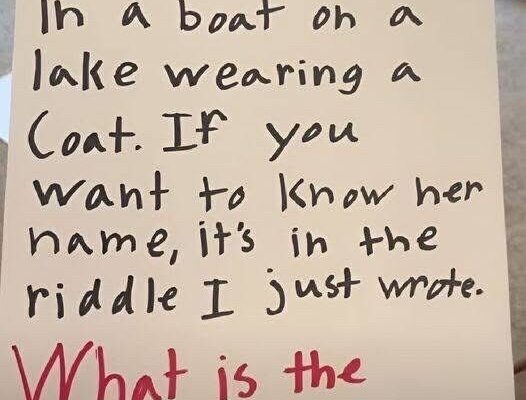The Woman in the Boat Riddle That’s Stumping the Internet — And Why It’s So Satisfying When You Solve It
Smartphones have changed how we consume content—from endless social media scrolling to streaming everything on demand. Yet, even in this fast-paced digital age, there’s something enduring about the charm of a good riddle. These classic puzzles continue to thrive, and one in particular—the “woman in a boat” riddle—has recently gone viral, challenging even the most seasoned solvers and offering a surprisingly clever twist.
Why Riddles Still Matter in the Digital Age
Despite the endless variety of content at our fingertips, riddles hold a unique place in modern culture. They don’t rely on flashy graphics, trending audio, or swipe-friendly layouts. Instead, they ask something far more powerful of us: our attention. Riddles engage the brain in a way few other forms of entertainment can, encouraging mental flexibility, patience, and the ability to think differently.
Unlike trivia or math problems, riddles often rely on ambiguity and subtle language cues, making them less about knowledge and more about interpretation. In that way, they remain timeless. And the woman-in-a-boat riddle is a perfect example.
The Riddle That’s Catching People Off Guard
The riddle typically goes like this:
A woman is sitting in a boat. She looks down and picks up a piece of paper. On it is a name. She smiles, because it’s the answer she was looking for. What’s the name?
At first glance, many people overthink it. They start dissecting the situation: Who is the woman? What’s the significance of the boat? Was the paper a message in a bottle? The clues seem vague, even misleading.
But the brilliance of this riddle lies in how it plays with your expectations.
The answer?
Andrew.
A Twist in the Words: The Power of Language Play
What makes the answer so clever isn’t some elaborate logic or obscure reference. It’s a simple—and incredibly sneaky—play on words.
The trick lies in how the phrase is spoken or interpreted: “and drew his name.” Say it aloud and you’ll hear it: “Andrew’s his name.”
It’s a linguistic sleight of hand, the kind that forces you to let go of traditional logic and listen more carefully. You don’t solve it with knowledge—you solve it by hearing it differently.
This is what makes the riddle so enjoyable. The moment you get it, there’s a snap of realization that feels genuinely rewarding. It’s the same psychological satisfaction we get from solving mysteries, only in a bite-sized form.
Why It’s Going Viral
The simplicity of the riddle, combined with its subtle trick, has made it ripe for sharing online. On platforms like TikTok, Instagram, and Reddit, users are presenting the puzzle to their followers, filming their confused reactions, and then revealing the answer with a smile.
In a world overloaded with fast-paced content, this kind of quiet brain teaser stands out. It’s easy to share, quick to consume, and even quicker to pass along to a friend. Plus, once you’ve been stumped by it, you want others to experience that same “aha!” moment.
The Real Value of Brain Teasers
Beyond the entertainment factor, riddles like this offer real mental benefits. Studies have shown that puzzles can improve memory, enhance cognitive flexibility, and even reduce stress by offering a focused, low-stakes mental challenge.
They also spark curiosity and creativity. By forcing us to shift our thinking, riddles strengthen our ability to approach problems from new angles—something that benefits us in daily life far beyond the puzzle itself.
Final Thought
The “woman in a boat” riddle is a reminder that even in an age of cutting-edge tech and infinite content, the human mind still craves challenges that are deceptively simple and wonderfully clever.
It doesn’t matter if you were stumped at first. The joy is in the discovery—and in passing it on. Because sometimes, the smartest thing you can do… is stop trying to be smart and just listen.



